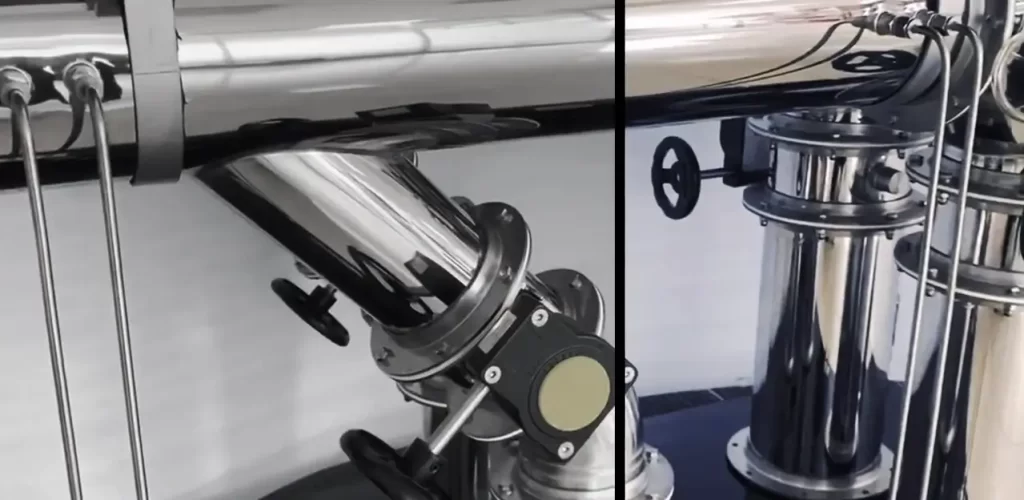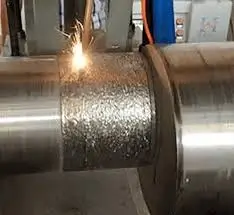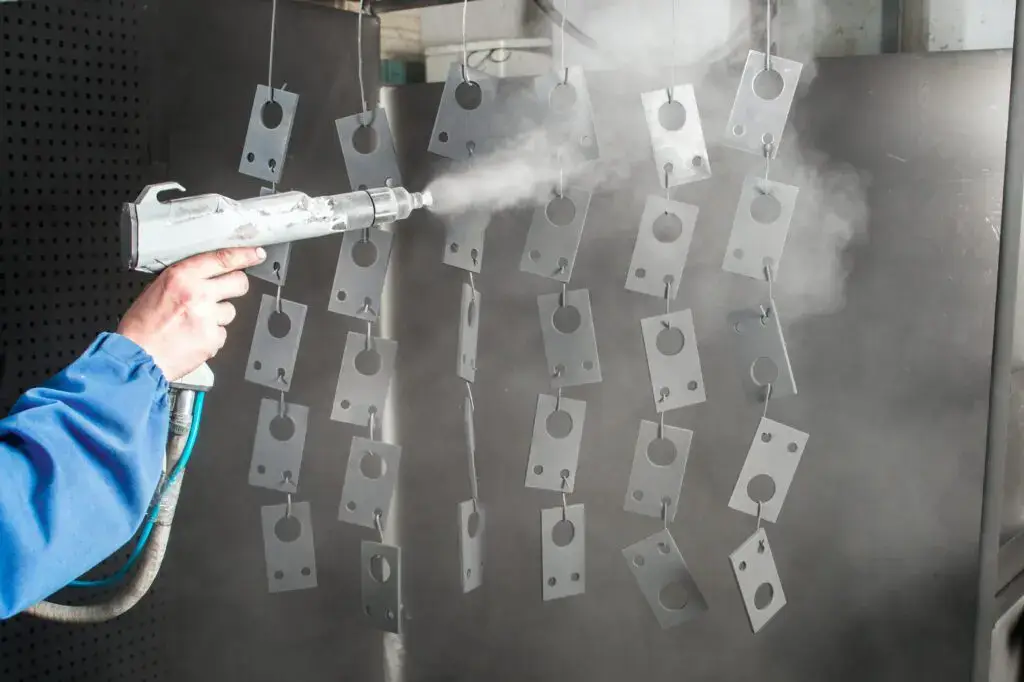
Teflon often referred to as polytetrafluoroethylene (PTFE) is a typical process that is used to coat metal parts to increase their life. It makes them last longer, and resist corrosion. improves functionality, and protects against wear and corrosion. DuPont’s PTFE, known as Teflon, is a popular material. It has excellent non-stick, heat-resistant, and chemical-resistant properties. This coating creates a smooth and non-stick finish. It safeguards the metal while decreasing friction.
This article explores PTFE coatings stainless steel and their versatile applications across various industries. We will examine how PTFE boosts performance and durability. We will also look at its key benefits to various sectors.

Stainless steel Teflon (PTFE) coated duct
What is Teflon Coating?
Polytetrafluoroethylene (PTFE), more often known as Teflon, is a synthetic fluoropolymer. A thin layer of Teflon, or polytetrafluoroethylene, is applied to metal surfaces in the process of PTFE coating stainless steel. It is mostly used for coating materials such as stainless steel. This coating creates a nonstick and smooth surface. Additionally, it enhances performance and longevity by reducing friction and preventing corrosion and heat. This way underneath metal is protected and friction is reduced.
PTFE’s strong carbon-fluorine bonds make it nonreactive. It is hydrophobic and has a very low friction coefficient. Applications include non-stick cookware and coatings for pipes and containers in corrosive environments. They are also used as a lubricant in machinery to reduce wear and energy use. Its abrasion resistance makes it ideal for auto and industrial machines, where low friction and a long lifespan are essential.

Teflon coating process
Try Prolean Now!
Benefits of Teflon Coating Metal Surfaces
A Teflon coating stainless steel can improve metal surfaces in many ways. It can make them last longer, work better, and resist corrosion and wear. Some benefits are enlisted below.
- Less resistance: The non-stick qualities of Teflon make it simple to move parts.
- Coatings protect metal items from the damaging effects of water, chemicals, and fire.
- It extends metal life and makes them resistant to erosion.
- Teflon is ideal for usage in industrial settings because of its tolerance to high temperatures.

Stainless steel duct with Teflon coating
Different Types of Surface Finishes
CNC machining and other industrial processes need high-quality surface finishes. There are different types of surface finishes that are used to achieve the desired surface quality: plating, powder coating, galvanization, anodizing, and laser cladding. Let’s discuss CNC surface finishing types.
Laser-Cladding Finishing
Laser cladding applies a coating by melting and fusing metallic particles with a laser beam. Laser cladding improves substrate strength, surface hardness, and corrosion resistance. Increasing laser power and reducing scanning speed improves surface smoothness.
Laser cladding surface polish depends on:
- Laser intensity
- Powder feed rate
- Beam diameter
- Scanning velocity
- Layer thickness
Anodizing Finish
Anodizing enhances the appearance and durability of machined parts. The technique electrochemically deposits a shielding oxide layer on the metal. Anodizing is mostly used on aluminum. However, magnesium, zinc, and titanium are also affected. Anodizing is better than powder coating for complex machined parts. The final components are long-lastingly colored.
Galvanization Finish
Galvanization protects metal parts against rust and corrosion by coating them with zinc. Metals in harsh circumstances require protection to stay strong. It’s used in buildings, cars, and ships. Its process involves cleaning the metal first. Use hot-dip, electro-, or spray galvanization to coat. Depending on the application, coating thickness might range from microns to millimeters.
Decorative Plating Finish
Decorative layer plating is a thin metal coating on a substrate. It creates an attractive, corrosion-resistant surface. Plates may be made of gold, nickel, or zinc. Protective metal plating may safeguard decorative devices, electronics, cars, and aircraft equipment.
Powder Coating

Powder coated parts
Powder coating is a common industrial coating process. It uses electrostatic deposition to apply a dry, finely powdered material to a metal surface. First, color powder is applied to machined parts. The components are baked until the substance melts and forms a protective coating. The surface is smooth and won’t chip, fracture, or fade. Powder coating may be applied to metal and non-metal parts. You should use it to polish metal surfaces.
The coating types are chosen per the metal finishing specs. This ensures the final product will work best under real conditions.

Powder coating Teflon
How does Surface Finish influence coating Results?
Teflon Coatings or PTFE are only as good as the surface on which they are applied. Uneven coating and poor performance might result from a rough surface. For example, microarc oxidation may be used to produce a robust, porous layer that can then be coated to improve adhesion and longevity. Coating adherence, and by extension, the coated product’s longevity and usefulness, are directly correlated to how well the metal surface is finished.

Teflon coated rolls
How Teflon Coatings Are Used in Different Sectors
The use of Teflon coatings stainless steel has spread to many different industries:
Automotive: The automotive industry uses it to improve fuel economy, extend engine life, and reduce friction in engine parts.
Food Industry: The food industry demands non-stick surfaces on all equipment and cookware. This is to enable easy cleaning and meet strict hygiene standards.

Cookware stainless steel Teflon-coated
Pharmaceuticals: In the pharmaceutical industry, this feature ensures drug safety. It prevents metal surfaces from interacting with chemicals.
Aerospace: It protects equipment from high temperatures and harsh conditions. This allows it to work reliably in tough aerospace environments.
Methods of Application: Teflon Coating 2400 to PTFE 6600
Many varieties of PTFE and Teflon coatings are available, and they all have their own set of advantages and disadvantages.
- The 2400 Teflon coating is perfect for very hot environments. It has exceptional heat resistance.
- This PTFE coating (6600 type) is ideal for places where the metal may touch strong chemicals. It is long-lasting and resistant to them.
Try Prolean Now!
Final Thought
Metal surface finishing is vital in many sectors. Teflon coating stainless steel maximizes product life. Coated metal parts may perform better if you choose the right finisher. Learn about the different surface treatments to find the best one. It is essential to take into account the protective properties of these coatings during manufacture and finishing service. PTFE Coating 6600, for instance, is resistant to chemicals, while Teflon Coating 2400 is resistant to high temperatures. The best coating—PTFE coating stainless steel or Teflon coating stainless steel—depends on the application’s specs.




0 Comments